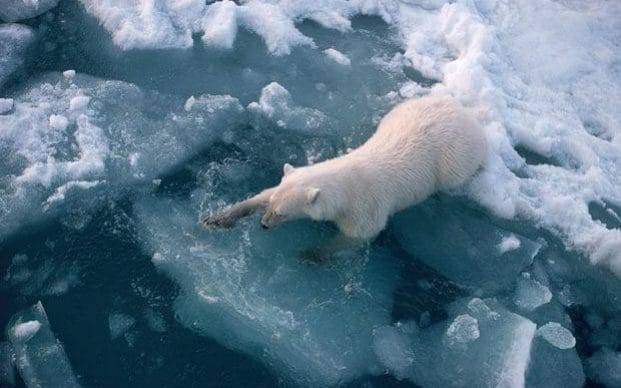The Glaciers and Sea Ice Are Melting!
Ice covers about 10% of Earth’s surface. Almost 90% of it is located in Antarctica, while the remaining is in Greenland. The total of two ice sheets is 40.6 million square kilometres. This freezing white thing is important because it reflects excess heat into space and maintains Earth’s temperature. It also sustains life by replenishing ecosystems and providing fresh water to wildlife.
Glacier is a huge chunk of ice in land that moves very slowly which is created by time and pressure. As snow falls, it creates new layers and buries those under it. The older layer is compressed and crystallized to become high density glacial ice. The genesis takes a century long and the glacier will grow for thousands of years. It varies in shapes and sizes, e.g. Alpine glaciers have the form of a mountain. Well, now you know about glacier, but have you ever heard of sea ice? Sea ice is frozen seawater that formed and melted in the ocean. The difference is the location. What about the part of the glacier that falls to the ocean? The term for that is an iceberg.
As they grow, they also melt. Every summer, glacial melt fertilizes downstream ecosystems by releasing long-time contained nutrients. It feeds local biodiversity and fuels the blooms of phytoplanktons. When they melt, they keep solar radiation out due to the ice-albedo effect. Albedo is a measure of how much incoming solar radiation is reflected by the surface. The absence of ice on land causing sea ice reflects energy that will be absorbed by lower-albedo ocean. The process benefits both humans and other organisms, but at the same time, it has a limit to how much melting is tolerated. The equilibrium is the mass lost after the melting season that will be regained in winter seasons as snow falls. Right now, the process is disrupted due to (you know the answer), humans.
Melting glaciers affect the sea level to rise, which in turn increases coastal erosion and intense storms like hurricanes and typhoons. The Greenland ice sheet is now melting four times faster than in 2003 and contributes to 20% of current sea level rise. The melting of glaciers and sea ice also affect weather patterns. As the temperature is warming up, ocean circulation is disturbed.

Eventually, the consequences of the event can be disastrous. Industries that depend on the ocean will be affected as warmer waters change marine life behaviours. Floods will happen more often, hence coastal communities must seek another place to live. Wildlife like walruses and polar bears are losing their home as sea ice melts.
Are there any possible solutions to stop the ice melting before it reaches the irreversible point? Scientists believe that large-scale reductions in greenhouse gas emission have the possibility to limit the warming to only 1.5°C. The use of fossil fuels in many countries has to be stopped. Individual actions, even though seemed insignificant, play an important part. Consistency of the actions can reduce the consequences we already feel. The glacier and wildlife are counting on your actions.

Writer’s Profile:
Tan Rendy, an editor staff of Eka-citta and a student majoring in Biology at Universitas Gadjah Mada. Writer has interest for self development, nature, environmental, and biology related topics. A step closer to him is achieved by contacting him via email tanrendy@mail.ugm.ac.id or Instagram @trfvl.
Reference:
Hancock, L., Why are glaciers and sea melting?, viewed on 22 June 2023, from https://www.worldwildlife.org/pages/why-are-glaciers-and-sea-ice-melting.Rance, L., 2023, What Does Glacial Melting Tell Us About Our Changing Planet, viewed on 22 June 2023, from https://earth.org/glacial-melting/.